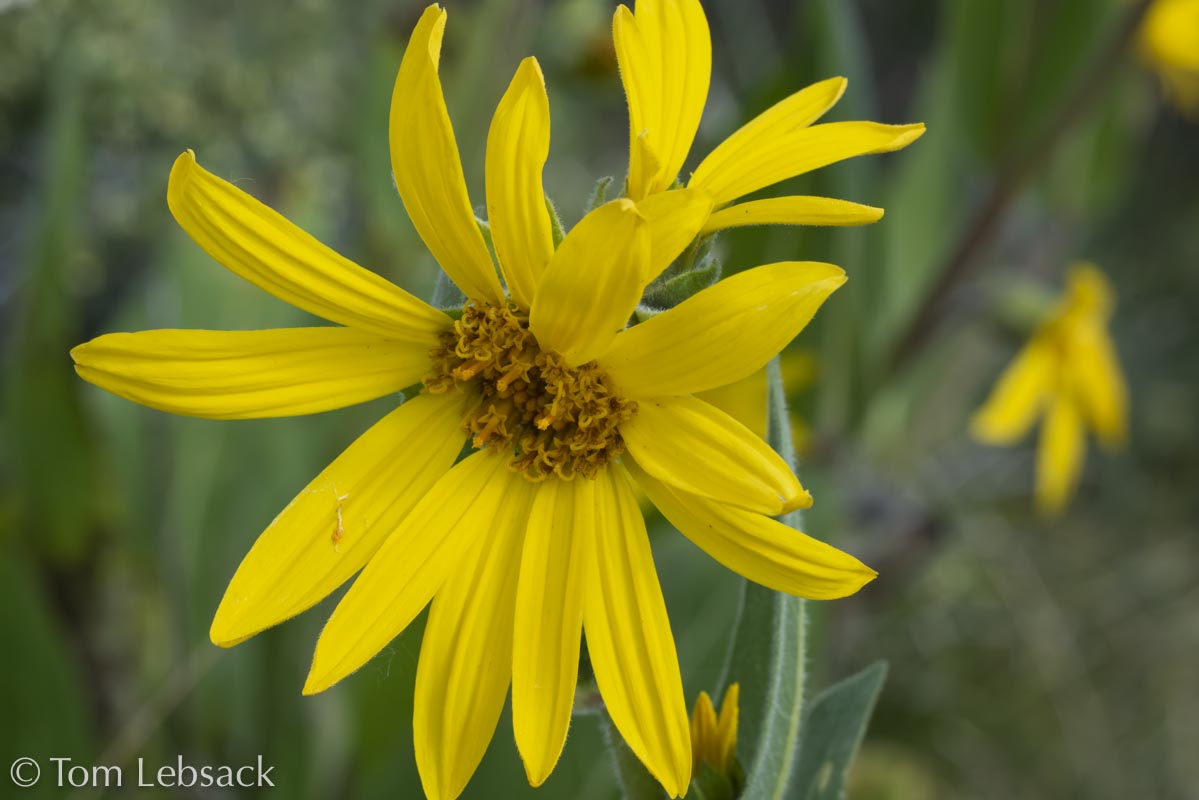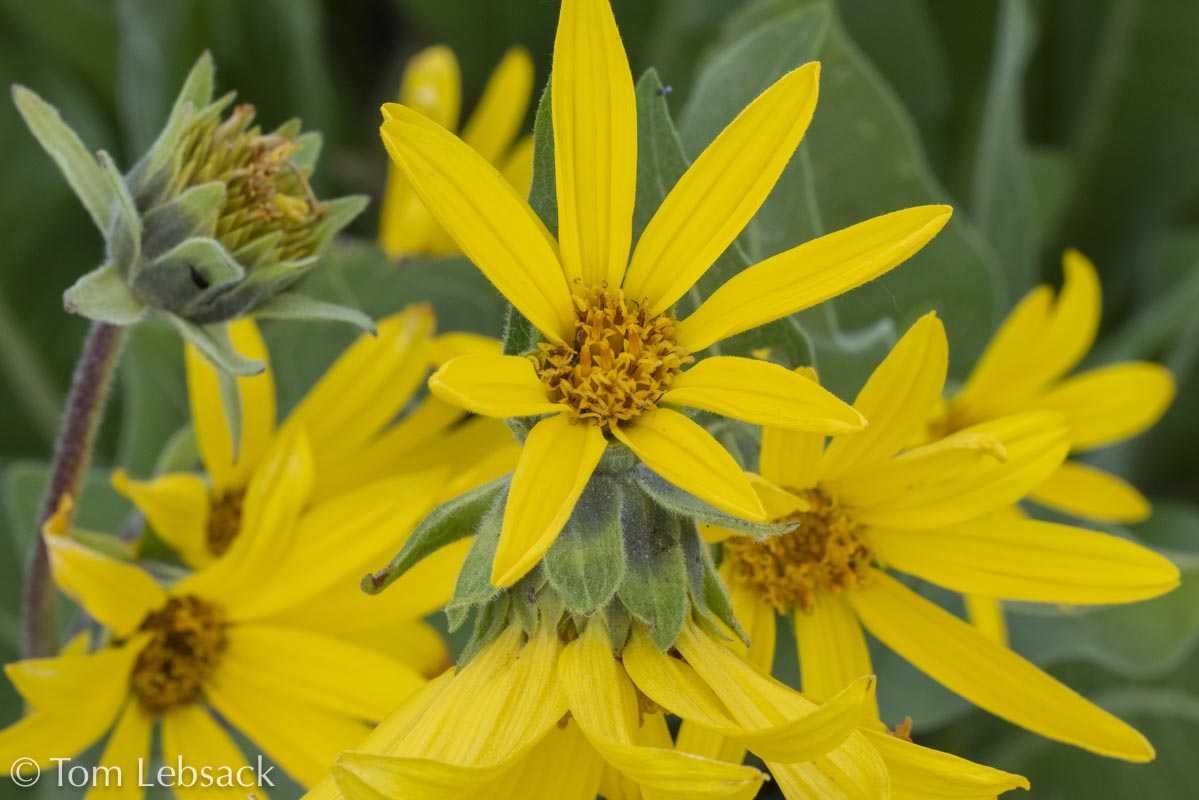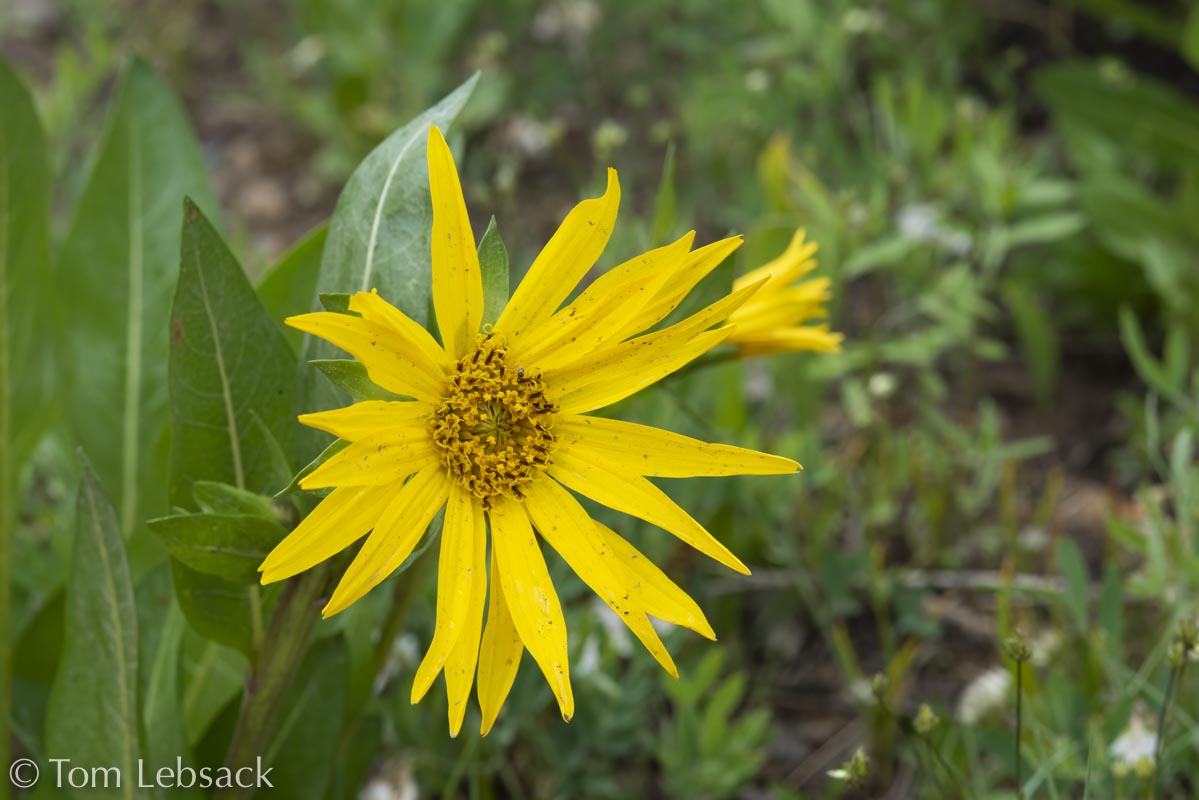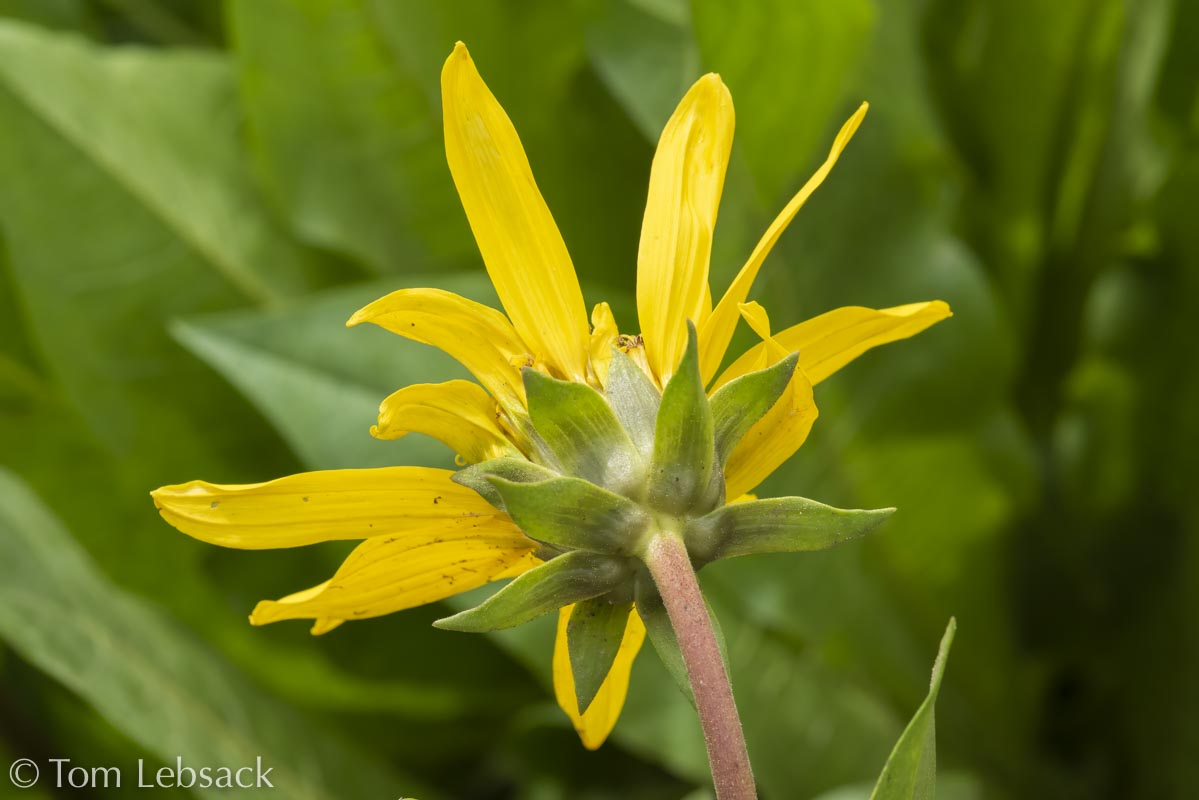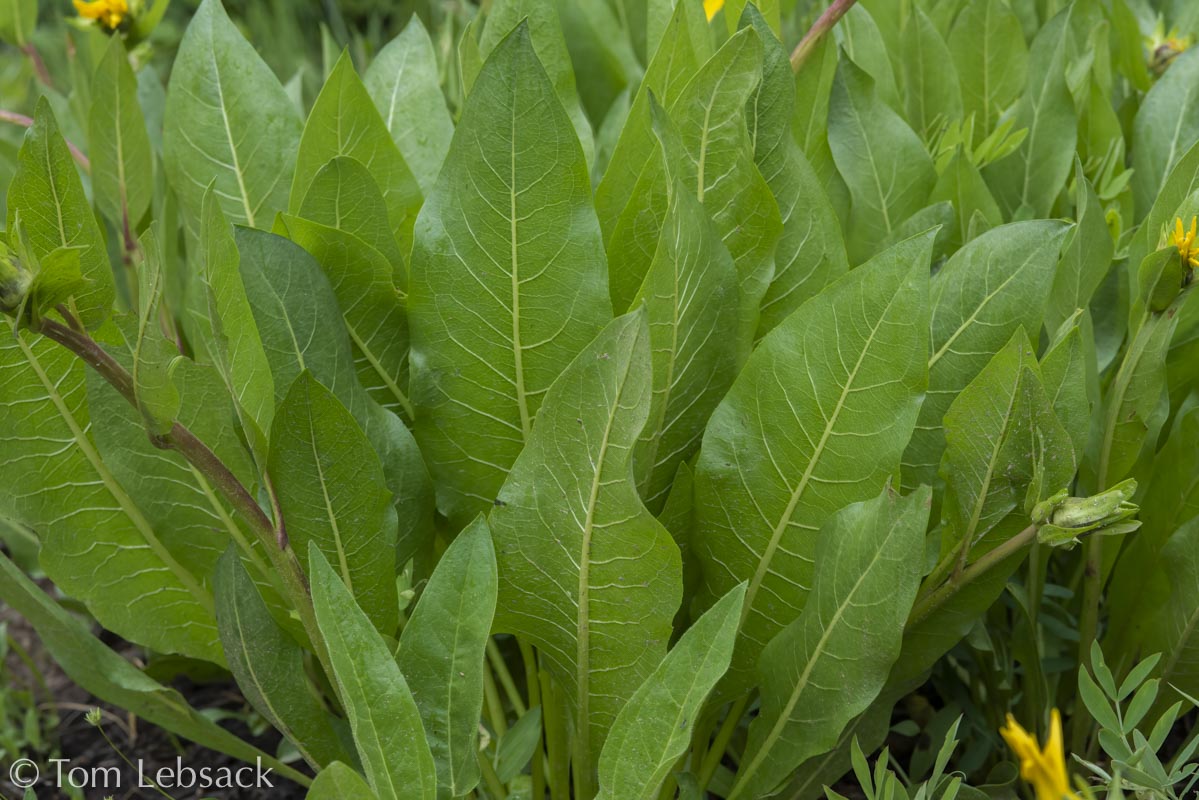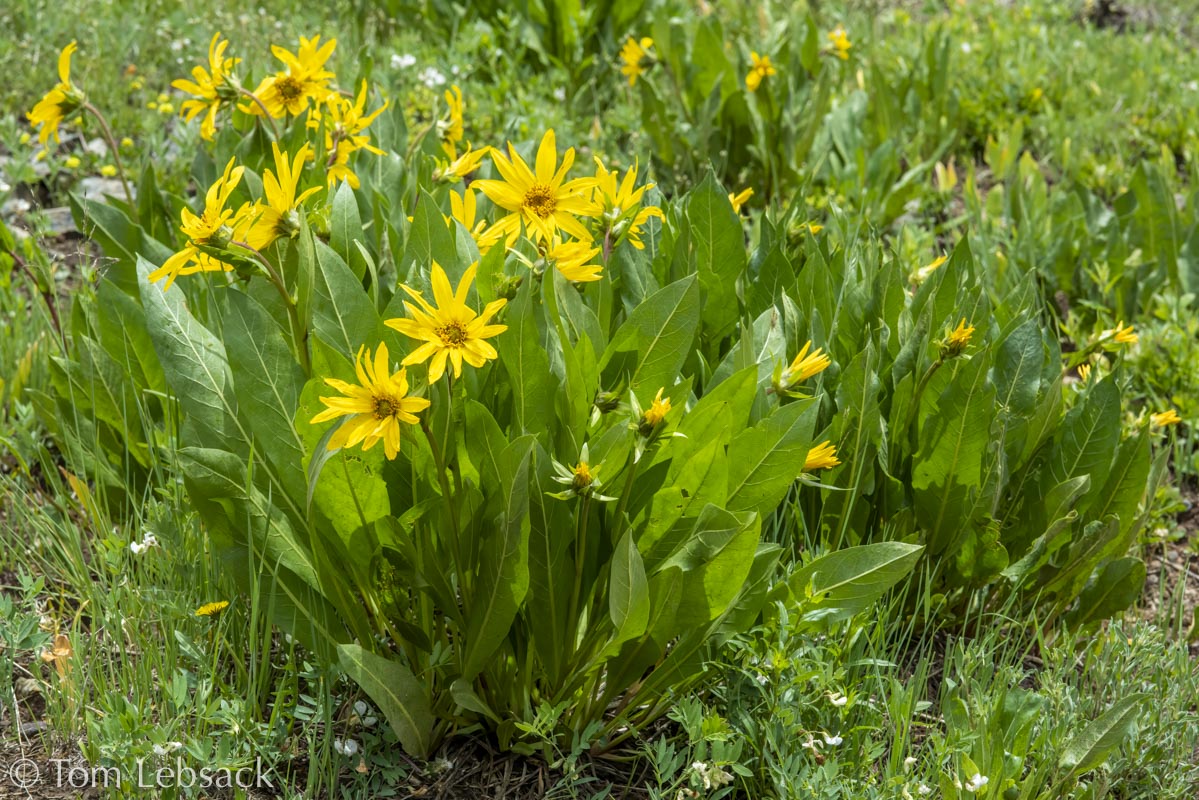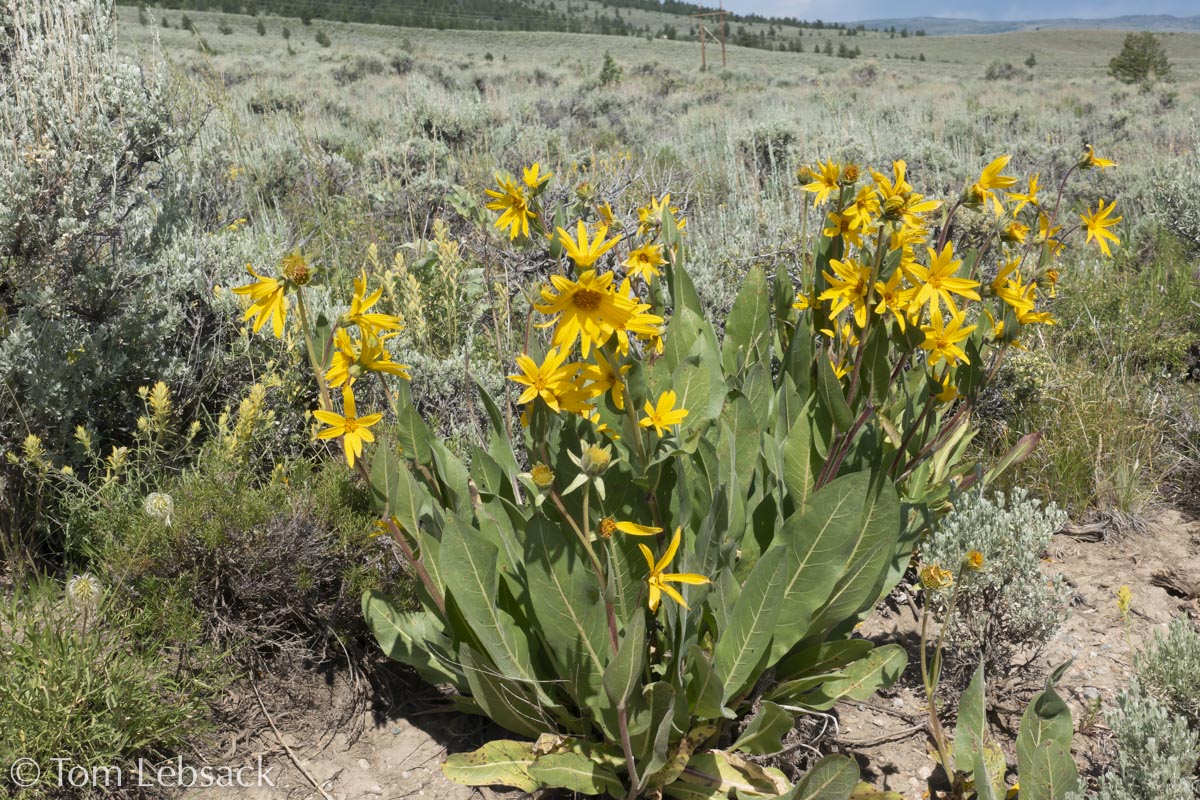Wyethia amplexicaulis
(Northern Mule’s Ears)
| Scientific Name | Wyethia amplexicaulis | USDA PLANTS Symbol | WYAM |
| Common Name | Mule's Ears | ITIS Taxonomic Serial No. | 38674 |
| Family | Asteraceae (Sunflower) | SEINet Reference |
Click Here |
| Description |
Life zones and habitat: Foothills and montane (6500 to 10500 ft.); moister soils in draws, meadows, open woods, and open
grasslands; often growing in large, massive displays covering acres of meadows. Plant: Leafy perennial 10 to 32 inches tall; hairless stems and leaves. Leaves: Shiny basal leaves, smooth (hairless), dark green lanceolate-elliptic or oblong-lanceolate blades, 6 to 12 inches long (or more); margins usually entire, sometimes denticulate or dentate, prominent veins; stem leaves are similar but smaller going upward, upper leaves sessile or clasping. Inflorescence: Single or (more often) 2 to 8 bright yellow sunflower-like heads 2 to 5 inches across, 8 to 21 ray florets and numerous yellow disk florets; central head is larger; hemispherical to conical involucre with 18 to 36 or more phyllaries in layers, 3/4 to 1-1/4 inches long (outer longer than inner), hairless. Bloom Period: June to August. References: "Flora of Colorado" by Jennifer Ackerfield, Paul Slichter, Fire Effects Information System and SEINet. |
BONAP Distribution Map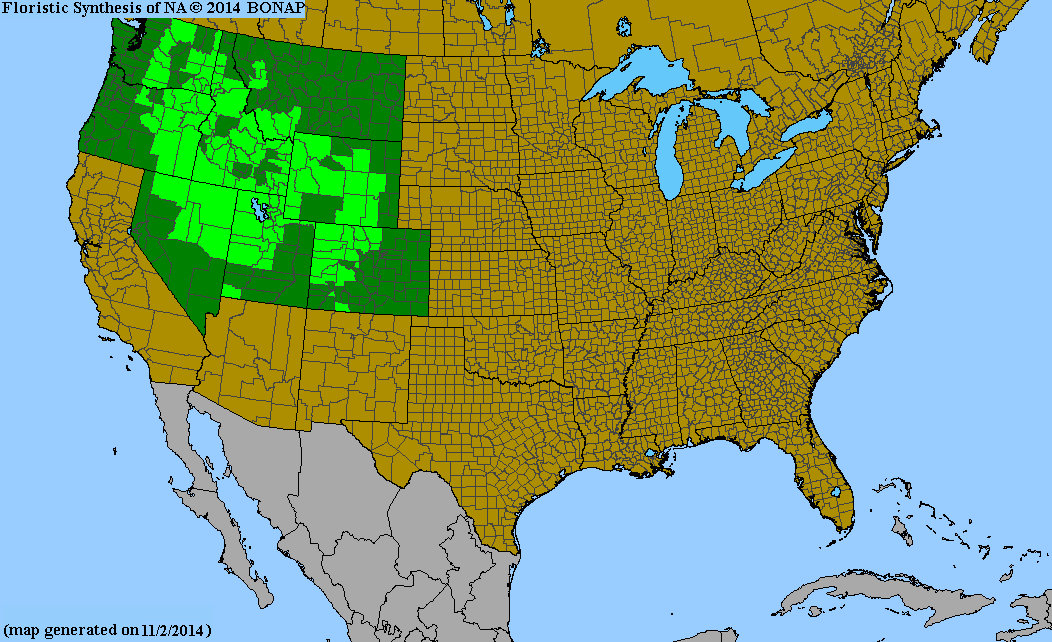
Map Color Key |
Colorado Status: Native |
© Tom Lebsack 2025
Banner photo: Castilleja rhexifolia and a brewing storm over the San Juan Mountains
I try to provide accurate, up-to-date, and relevant information, but cannot guarantee the completeness or accuracy of any information presented on this website. I use authoritative references to insure high standards of accuracy and review and update the information frequently.

